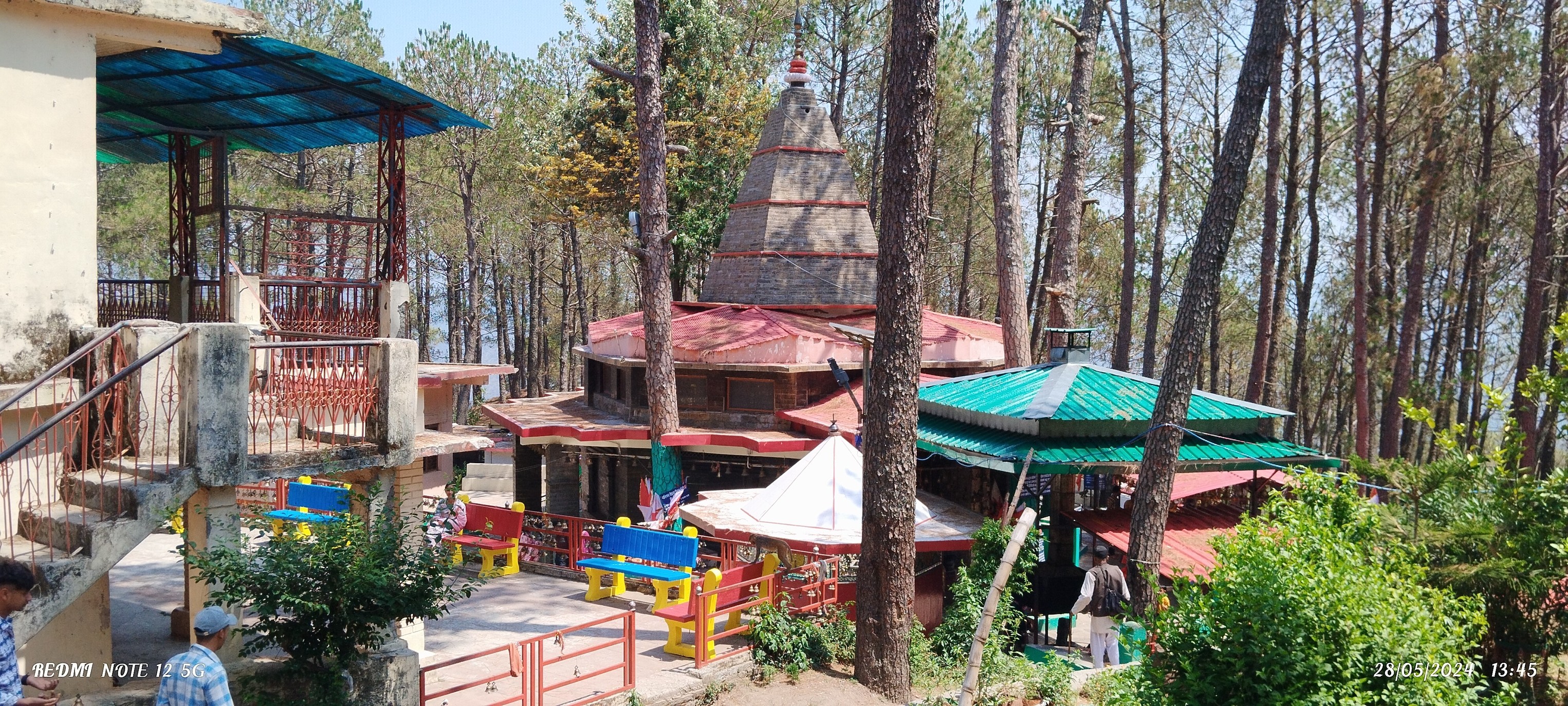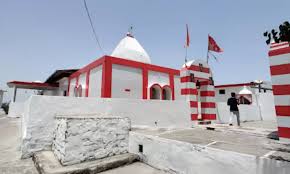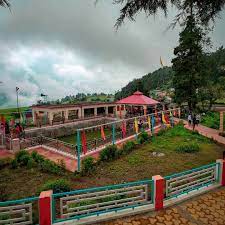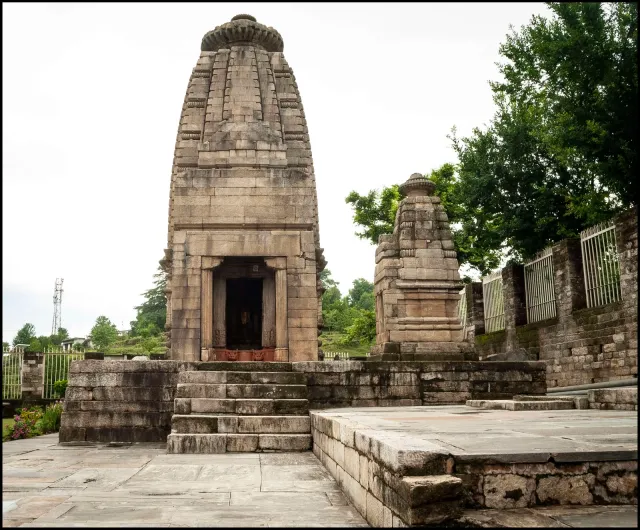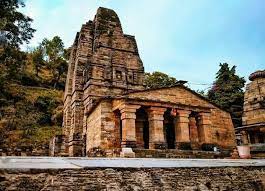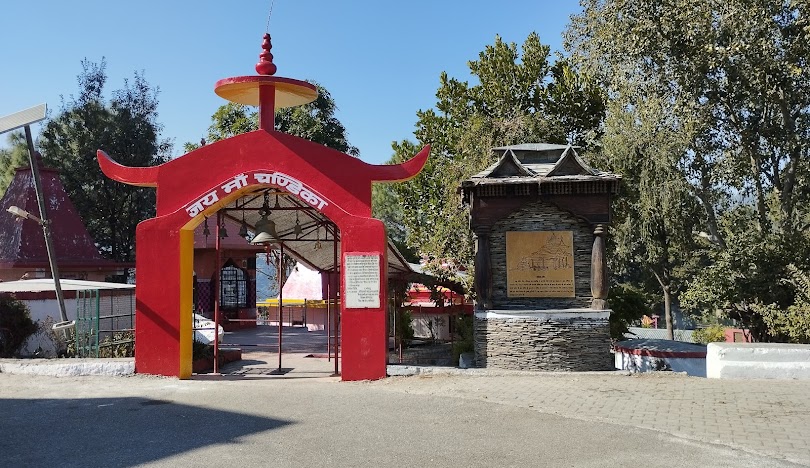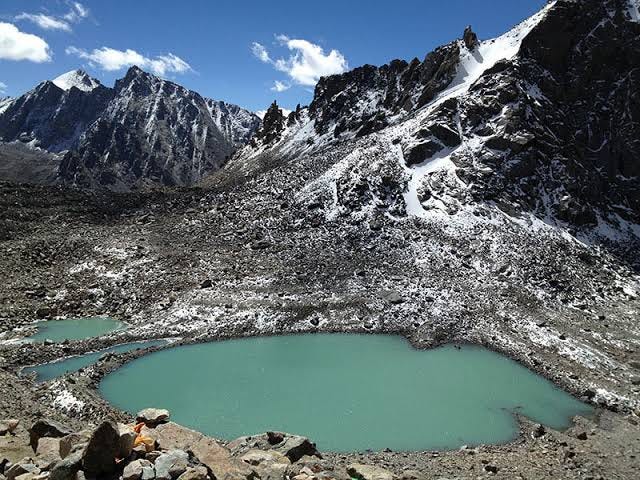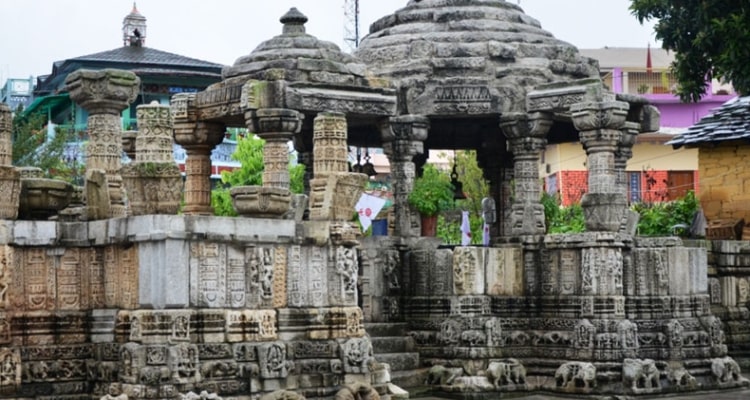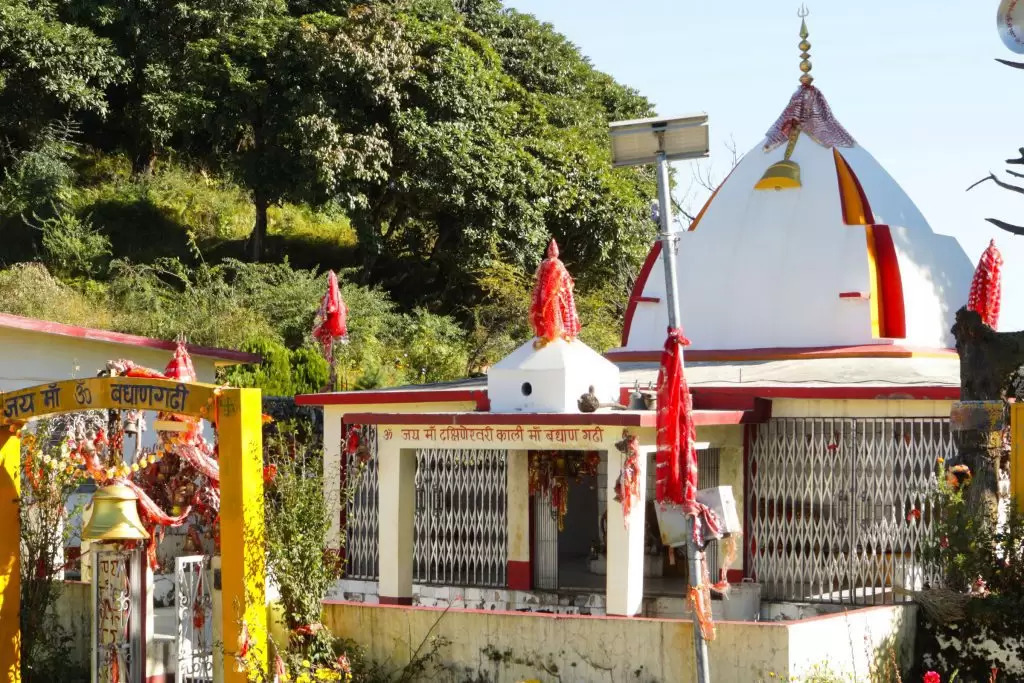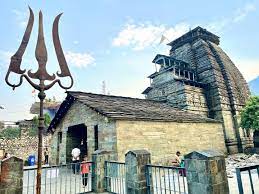The Climb Into Silence
The road out of Almora bends sharply. One moment you’re in a busy bazaar buying chai and pakoras, the next you’re following a narrow hill road lined with pines. The air cools as you climb. The smell changes too, less dust, more resin, and that faint sweetness of oak leaves after dew.
A few bends later, you hear them. Bells. First faint, like wind brushing metal. Then stronger. By the time you see the gate of गैराड़ गोलू देवता मंदिर, the sound is everywhere. Hundreds of bells hang from railings, trees, and iron bars. Some bright and new, others eaten by rust. They clang without rhythm, like a thousand prayers trying to speak at once.
Meeting the न्याय देवता
गोलू देवता is not distant. In Kumaon, he is spoken of like someone you know, someone who listens. People call him the न्याय देवता, the God of Justice. You don’t just fold your hands here, you write.
Letters cover the walls. Some are small scraps of paper. Others are long petitions tied with twine, stamped with seals like files from a court. A few have turned yellow, corners curling from damp. Devotees say each one has been read, even if by wind or by god. If you’ve been wronged, you tell him directly. No lawyer. No delay. Just faith.
Inside the Temple
The temple is not huge. A sloping roof, whitewashed walls, and wooden beams dark with time. Step inside and the air changes, cooler, heavier with incense. The idol of गोलू देवता sits calm, a white turban tied on his head, flowers draped across his lap. Lamps flicker at his feet.
Around him, bells hang in clusters. Thick iron chains hold the heavier ones. Thin wires carry the smaller ones, tied with red and yellow threads. When a breeze moves through, the sound rises softly, unevenly, filling the sanctum with its own chant.
Stories That Keep the Temple Alive
Villagers will tell you stories if you ask how land disputes were settled here after years in court. How promises made to गोलू देवता had to be kept, or bad luck followed. How a man once swore falsely before the deity, and his case collapsed in days.
None of these stories is written in books. They pass from mouth to mouth, from grandmother to child. That is why the temple matters, not just because it stands on a hill, but because memory and belief keep building its walls long after stone.
Sitting in the Courtyard
- If you sit for a while, you start noticing small things:
- Letters fluttering in the wind, ink fading, but words still visible.
- A bell so rusted it barely rings, yet it is still tied with fresh thread.
- The smell of incense mixed with the sharper tang of iron.
- A child is tying a tiny paper note almost as big as his hand.
- Silence between the bells, heavy and complete, before the next gust of wind.
It feels less like a temple and more like a place where thousands of voices are waiting to be answered.
How the Day Moves
Morning starts quietly. Priests light the first lamps, villagers drop by on their way to fields, and schoolchildren pause with folded hands. By noon, the courtyard is busier. Some come with bells wrapped in cloth, others bring carefully written letters. Priests bless the offerings, pin notes to walls, and tie bells where space remains.
Evening slows everything down. The sun slips behind ridges, lamps burn brighter, and the air fills with a softer chant. Devotees leave one by one, until only the bells keep speaking into the night.
Concise Handbook for Tourists
- Where: Almora vicinity, Uttarakhand Kumaon region.
- Why: Seat of गोलू देवता, the न्याय देवता of
- Unique to See: Letters of petition covering walls, bells of every size tied by devotees.
- Best Time: March–June, September.
- Festivals: Rural fairs in गोलू देवता festivals draw huge crowds.
- What to Bring: A bell or prayer in writing if an offering is to be made by you, woollens if traveling in the winter months
Getting There
Reaching Gairar is simple after you are in Almora, because shared jeeps and taxis often make the ride. Almora itself is well-linked by road to Kathgodam and Haldwani. For the rail vacationer, the closest railhead is at Kathgodam, approximately 90 kilometers from Almora. The nearest airport is at Pantnagar.
The journey constitutes a fundamental part of the overall experience, characterized by using terraced fields adhering to inclines, lush and verdant forests, and abrupt glimpses of snow-capped peaks performing between turns. Upon arrival at the temple, one has already begun to sense a distance from the surrounding clamor.
Why It Matters
When people think of Tourism in Uttarakhand, they picture Nainital’s lakes or Kedarnath’s snowy peaks. But shrines like Gairar Golu Devta are what make the hills breathe. They are not monuments built for visitors. They are living places where truth and justice are still spoken in prayer.
For travelers on Uttarakhand tour packages, this may not look like the main attraction. Yet for locals, it is the heart. A reminder that fairness is sacred, that promises matter, that truth carries weight even when courts fail. As a tourist place in Uttarakhand, it offers not spectacle but something harder to find, faith that listens.
Walking Away As I departed, the courtyard began to clear. The bells continued to sway inside the breeze, letters whispered softly, and the idol remained serene within the diminishing illumination. The descent was steep and tranquil, followed completely by the sound of my footsteps and a canine barking distantly below.
Even now, the sound of them stays. Not in the ears but in here. As if an echo hoping to be answered.
गैराड़ गोलू देवता मंदिर is not just stone and iron. It is a hill full of promises, a place where truth is written down and left to the wind, trusted to reach the god who judges fairly.

